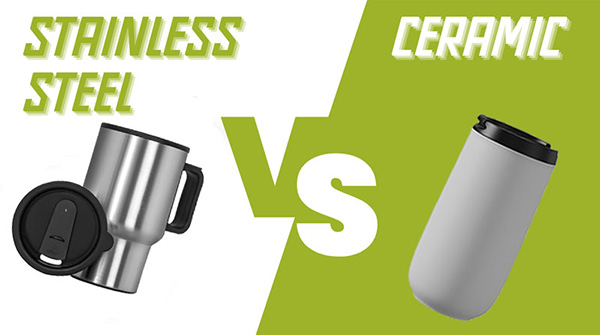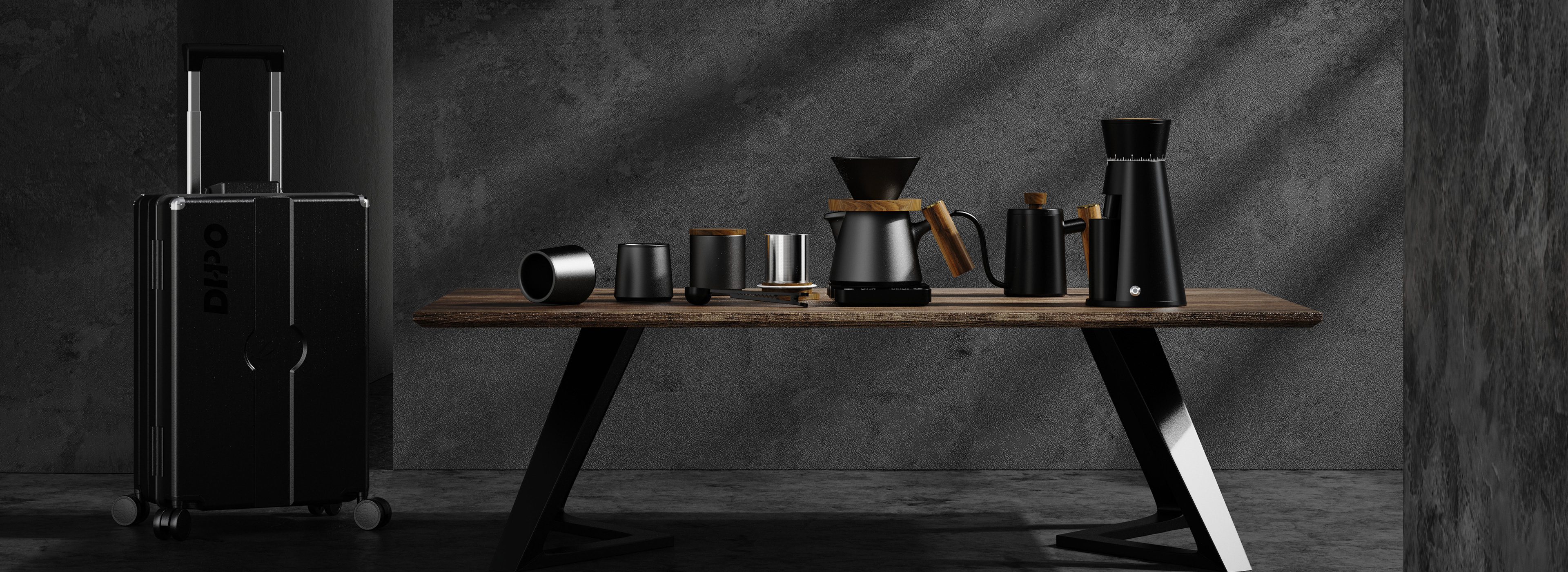
With growing awareness of quality living and sustainability, to-go cups have become essential in daily life. Among the most popular options, ceramic and stainless steel cups stand out. However, their differences in material and functionality significantly impact the user experience. Let’s explore their unique qualities to help you make an informed choice.
1. Material and Taste
Ceramic To-Go Cups:
Ceramic’s inert nature ensures it doesn’t react with beverages, preserving the authentic flavor of coffee, tea, or acidic drinks. This makes it an excellent choice for those who prioritize taste.
Drawback: Ceramic is heavier and less portable compared to stainless steel.
Stainless Steel To-Go Cups:
Stainless steel may sometimes impart a metallic taste, particularly with acidic beverages. However, advancements in material quality have minimized this issue. Its lightweight design makes it a practical choice for portability.
2. Insulation Performance
Ceramic To-Go Cups:
Double-layer ceramic cups offer good insulation, keeping beverages warm while preventing the cup’s surface from becoming too hot. Although their heat retention isn’t as strong as vacuum-sealed stainless steel cups, they are sufficient for everyday use.
Stainless Steel To-Go Cups:
Vacuum insulation gives stainless steel superior temperature retention, keeping drinks hot or cold for extended periods. This makes them ideal for outdoor activities or long commutes.
3. Health and Safety
Ceramic To-Go Cups:
Ceramic doesn’t require interior coatings, eliminating concerns about chemical leaching or wear over time. Its smooth surface is also easy to clean and resists odors and stains.
Drawback: Ceramic is more fragile and can break if dropped.
Stainless Steel To-Go Cups:
While food-grade stainless steel is generally safe and durable, some models rely on internal coatings that may degrade with frequent cleaning.
4. Design and Aesthetics
Ceramic To-Go Cups:
Ceramic offers a premium, sophisticated appearance with endless design possibilities. Whether a sleek monochrome or intricate patterns, ceramic caters to those who value artistry and individuality.
Drawback: Ceramic’s lower durability makes it less suited for rugged use.
Stainless Steel To-Go Cups:
Stainless steel typically adopts a minimalist, industrial design. While it offers a modern look, it may lack the artistic appeal of ceramic.
5. Environmental Sustainability
Ceramic To-Go Cups:
Made from natural materials, ceramic is eco-friendly and biodegradable. However, its high-temperature manufacturing process requires significant energy.
Stainless Steel To-Go Cups:
Stainless steel is recyclable and long-lasting, making it environmentally positive when used over time. However, its production generates higher carbon emissions compared to ceramic.
Comparison
| Criteria | Ceramic Material | Stainless Steel Material |
|---|---|---|
| Material and Taste | Preserves flavor, inert material | Slight metallic taste, portable |
| Insulation Performance | Good insulation, moderate retention | Superior vacuum insulation |
| Health and Safety | No coating, fragile material | Food-grade, coating may degrade |
| Design and Aesthetics | Sophisticated, diverse designs | Minimalist, modern, less artistic |
| Environmental Sustainability | Eco-friendly, high production energy | Durable, recyclable, high emissions |
Ceramic and stainless steel to-go cups each have their strengths. Ceramic excels in flavor preservation, design aesthetics, and sustainability, making it ideal for those who appreciate refined living. Stainless steel, with its lightweight durability and superior insulation, is better suited for active, on-the-go lifestyles. We recently launched a double-layer ceramic to-go cup, Double Walled Coffee Cup CM350-01A, that combines elegance with practicality.
Keywords: ceramic to go mug
Originally published 25 Nov 2024, updated 25 Nov 2024.

We are currently developing DHPO distributors and agents worldwide
Join Us